ConverSight for Data Engineers#
ConverSight provides a powerful tool for data engineers to help their organization’s decision makers and business users get appropriate advanced insights from their data. By providing a user-friendly interface, self-service analytics, trend identification and advanced analytics capabilities, ConverSight can help businesses make informed decisions based on their data.
Data Engineering#
Data Engineering is crucial for natural language conversation business insights as it enables the creation of systems and infrastructure that support the generation of insights through conversational interfaces.
Data Preparation and Transformation#
Data preparation and transformation are important steps in the process of generating business insights from data. The goal of data preparation is to ensure that the data is accurate, consistent and relevant to the problem being solved. Data transformation is the process of converting data from one format or structure to another in order to prepare it for analysis.
Feature Selection: Choosing the most relevant features for your analysis based on your domain and previous searches.
Feature Engineering: Creating new features and variables that capture important information from the data.
The natural language conversation dialogues are broken down and then metamorphosed into appropriate queries and codes to fetch the necessary information from the stored dataset. Based on your query, the raw numbers and other information from the dataset are converted into understandable natural language dialogues or visualizations with valid units in a matter of seconds. At ConverSight, we’re driven every day to bridge the gap between data and decision making through the power of conversations.
Scheduling and Automating Jobs#
Scheduling and automating jobs in ConverSight is a powerful feature that allows organizations to streamline repetitive tasks and improve efficiency. This can help organizations save time and resources by automating routine processes, freeing up employees to focus on more important tasks.
ConverSight provides a robust task scheduling and automation framework that enables users to create and schedule tasks to run at a specific time or interval. This can include tasks such as data import/export, data processing and data cleanup. The scheduling of tasks can be done through a user-friendly interface, or programmatically using the ConverSight API.
Automated tasks in ConverSight can be triggered by a variety of events, including time-based triggers, data-based triggers and event-based triggers. For example, data import/export tasks can be scheduled to run at specific times or intervals, while data processing tasks can be triggered when new data is available. This can be achieved by following the steps:
Step 1: To view the datasets, go to the Data management menu. Locate and select the settings option for the dataset you want to schedule.
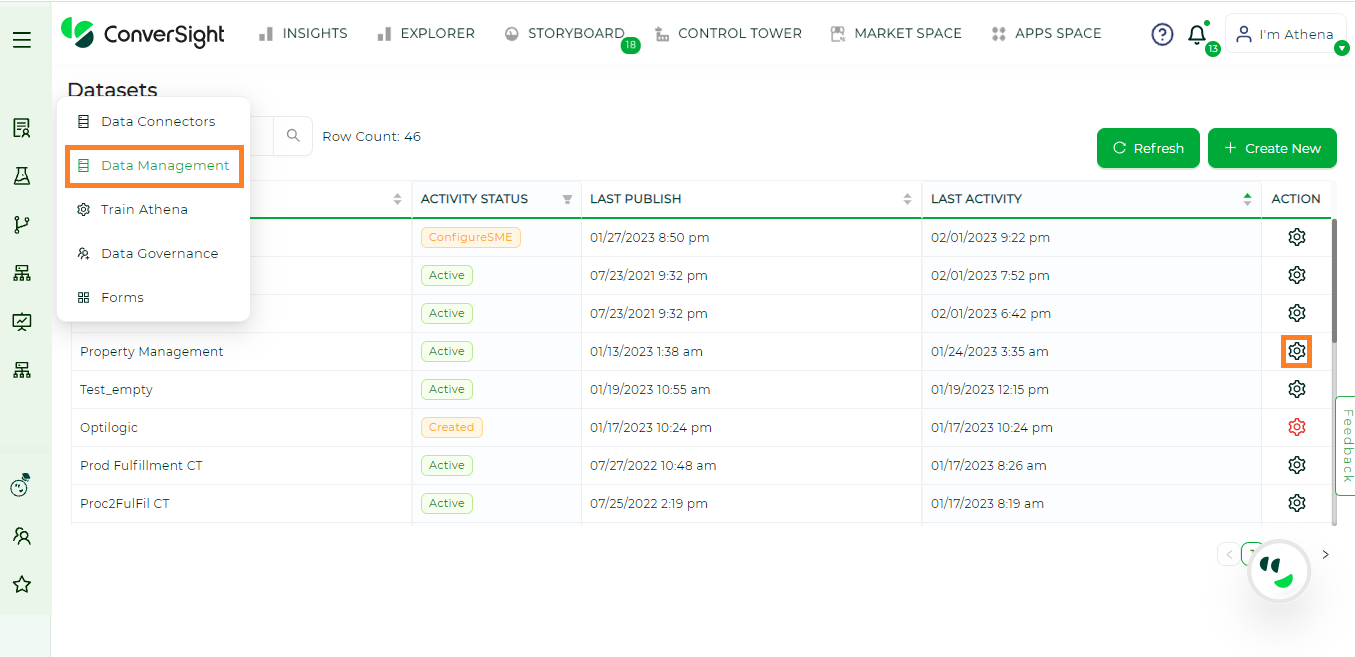
Data Management#
Step 2: Place your cursor on the settings option for the dataset you want to schedule, where you’ll see the schedule option.
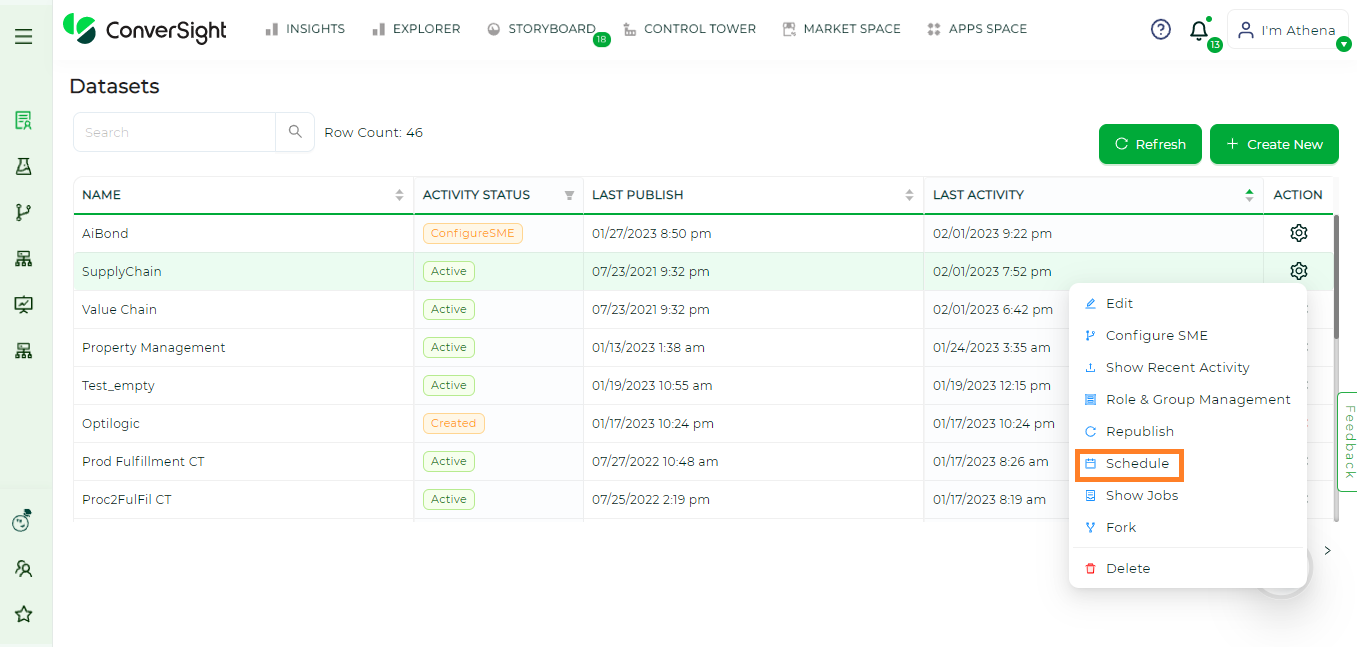
Schedule#
Step 3: By selecting the schedule option, you will be taken to an interface where you can create a schedule based on your needs.
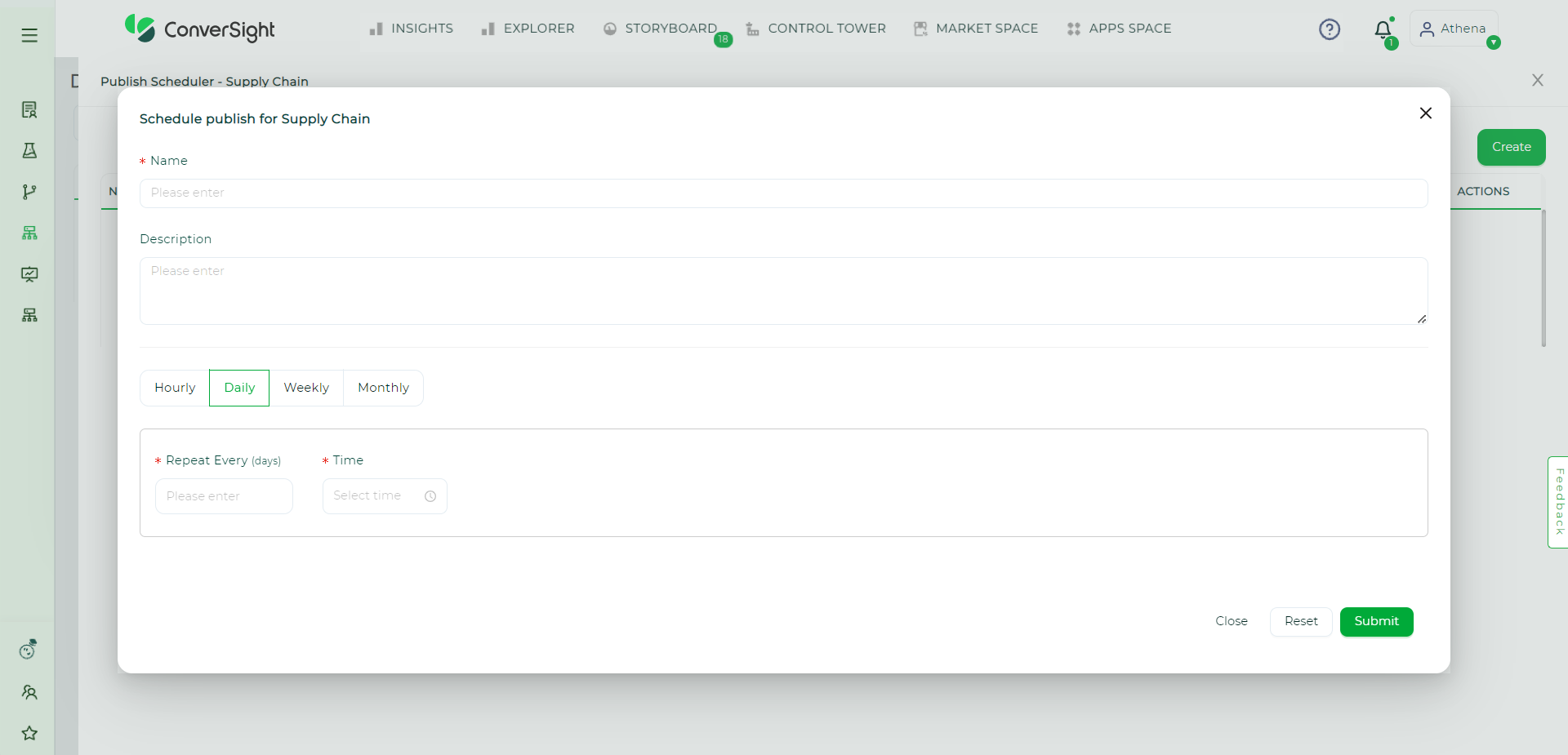
Creating a Schedule#
Monitoring and Troubleshooting#
Monitoring
Monitoring is the process of tracking, analyzing and reporting on the performance of data systems and the data they contain. It involves using tools and methods to collect, store and analyze data in real-time and to alert stakeholders when certain conditions or thresholds are met. The goal of data monitoring is to provide organizations with a real-time view of their data and to ensure that data systems are functioning as expected.
Data monitoring is essential for ensuring the reliability and integrity of data systems, as well as for making informed business decisions. It can also help organizations identify and address potential problems before they become critical issues.
Mostly monitoring is done internally within the organization. Users can monitor things under Data Management tab.
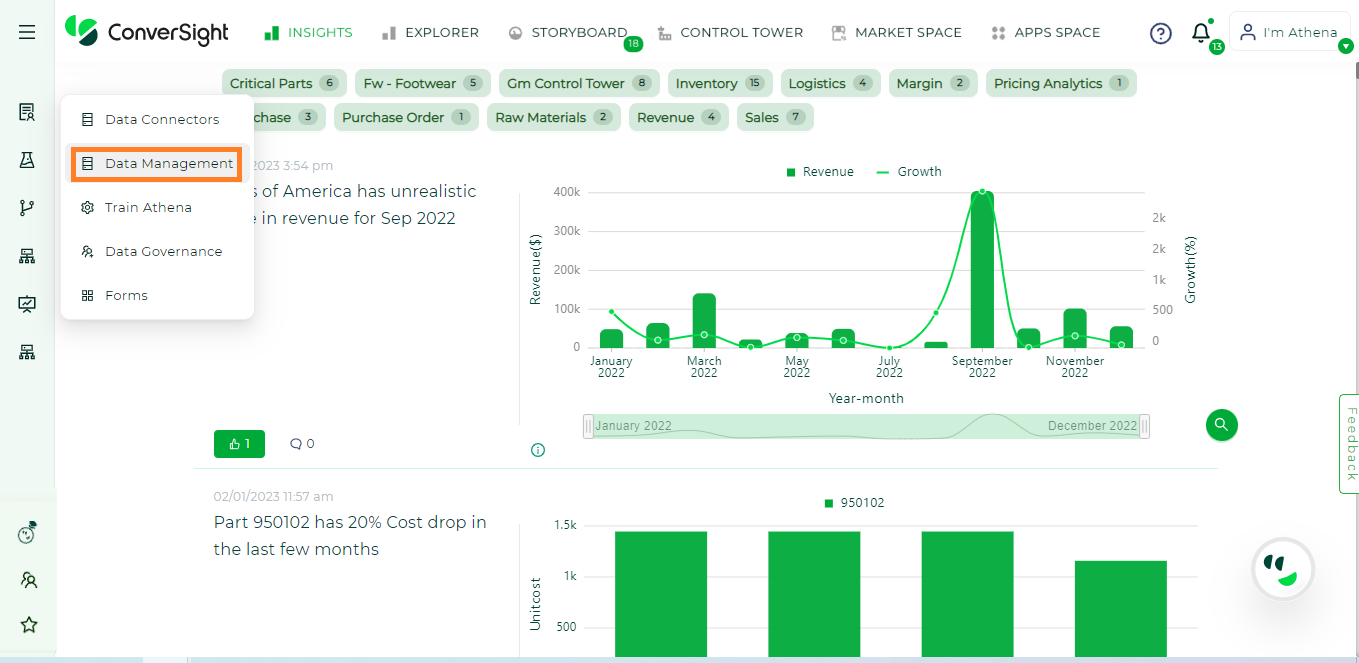
Data Monitoring#
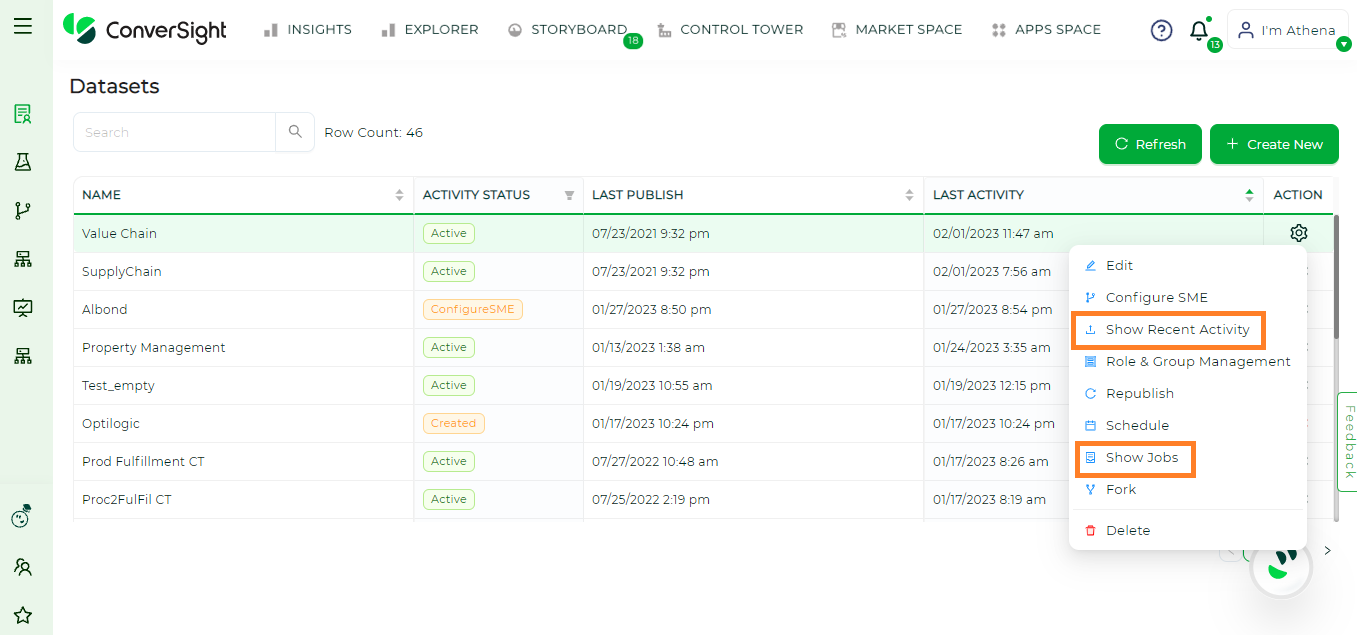
Data Monitoring#
Show Jobs will show you what are the tables involved and how it is processing and the task type such as loading, scheduling or republishing activity. Show Jobs will list all the task that is been monitored from the start.
Show recent activities will show you the most recent table that is accessed. If data load happened recently, only the table from that data loading will be displayed.
Troubleshooting
Troubleshooting in a data management system typically involves identifying the root cause of a problem and fixing it. This may involve reviewing logs and error messages, running diagnostic tests and collaborating with other teams to resolve issues.
Effective monitoring and troubleshooting are crucial for ensuring the reliability and performance of data management systems and for minimizing downtime and data loss.
We welcome your feedback on any additional requirements with respect to trouble shooting, improvements, or suggestions by posting it in the feedback window.
Click on the feedback bar in the middle of the window’s right margin. Type your feedback and attach any screenshots you would like to include to explain any improvements you would like to see. Your feedback will then be forwarded to us.
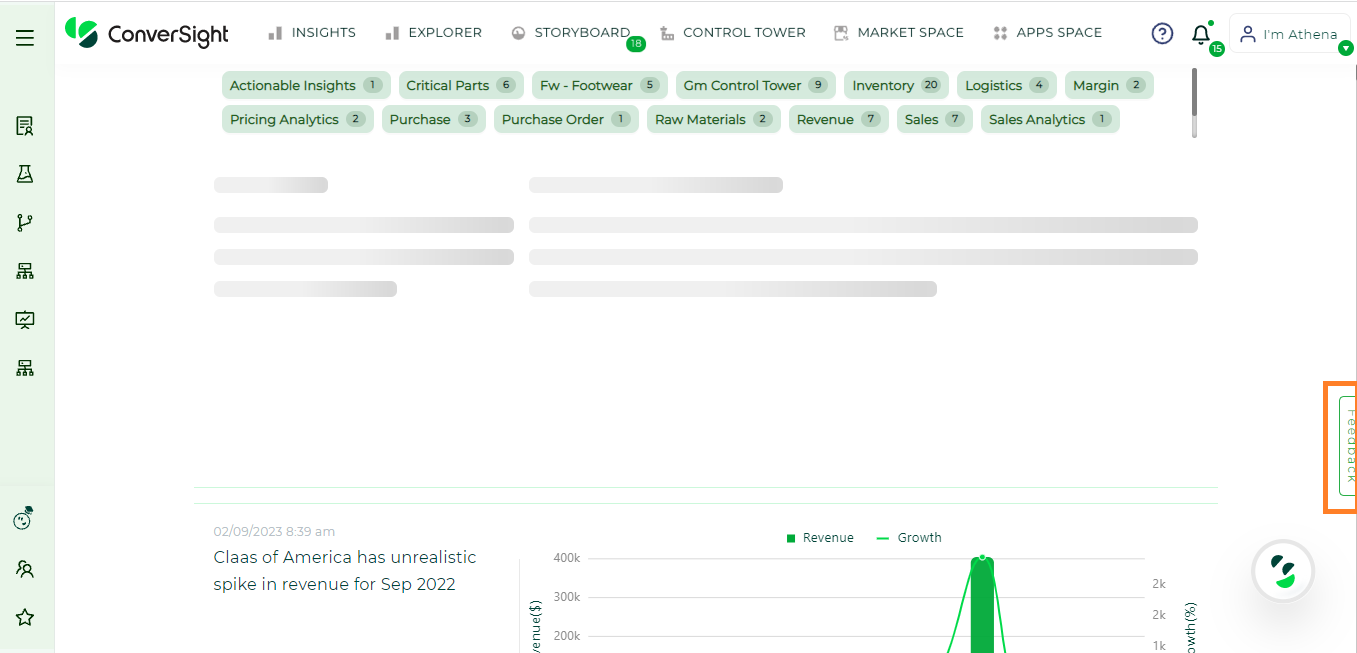
Feedback Bar#
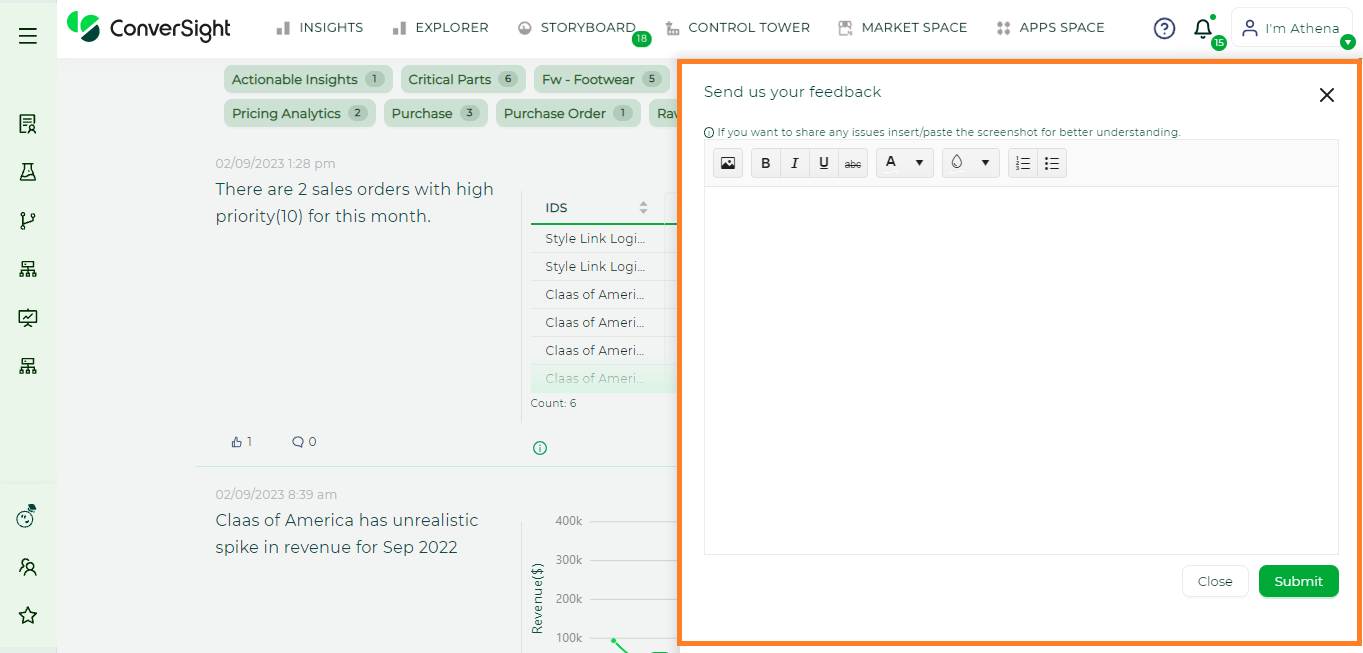
Feedback Window#